|
|
|
Bridles and Bits!
Welcome to the section on
bridles and bitting. Horses need bridles
when you ride them so you can control them efficently when you
ride them. Below are some diffrent types of bridles and bits.
Here are the points of control when you use a bridle and bit:
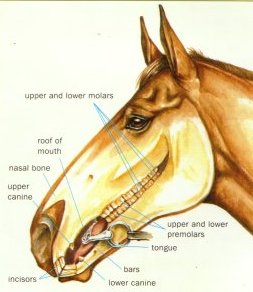
Here are some more of these points.
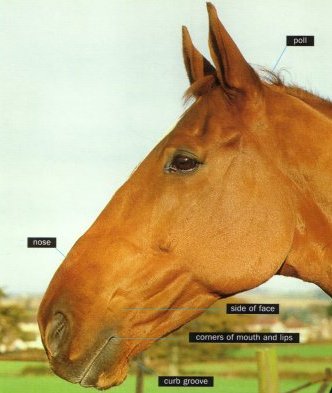
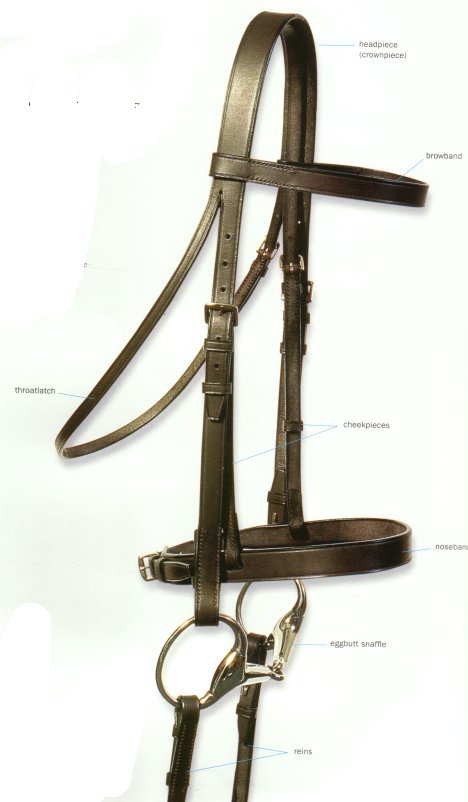
Here are the points of the Snaffle bridle. The Snaffle bridle is
a
simple basic bridle which is good for all types of riding. It is
also
the appropriate bridle for horses in the early stages of training.
The Noseband of this bridle is not essential. By changing the bit
or the noseband the action of this bridle can be stronger, so
that
the rider has more control over the horse and the way he carries
his head.
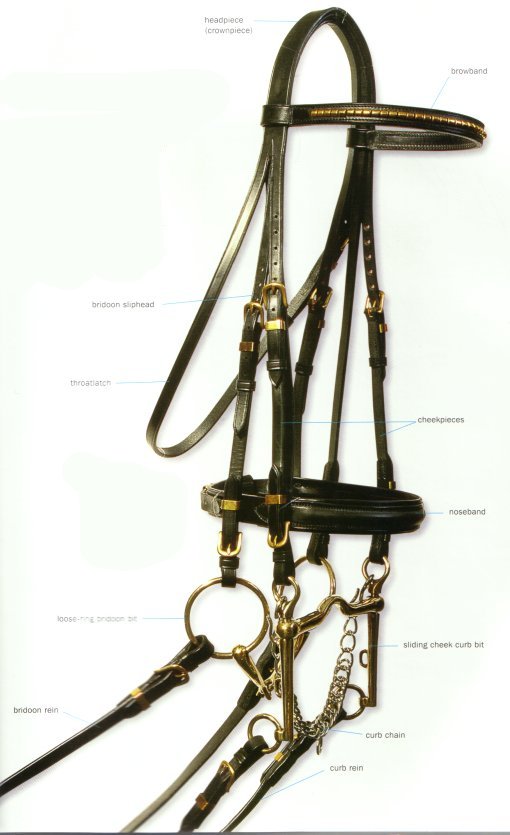
Here are the points of the double bridle. It is basically the
same design as
the snaffle bridle although the addition of the bridoon sliphead
means
that 2 bits can be used along with 2 sets of reins. This bridle
should
only be fitted with one noseband, the basic cavesson so that the
action
of the curb bit isnt interfered with.
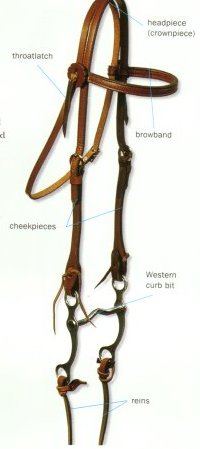
The western curb bridle is fastened with narrow leather thongs
This bridle can also be a one ear or split ear which is made from
a single peice of leather and prevents the headpeice from
slipping
accidently over the head.
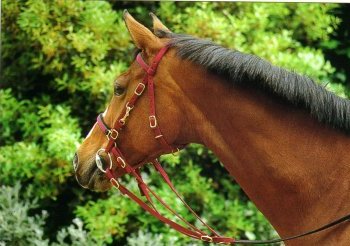
The endurance two in one bridle is a combination of a halter
and a standard bridle. The cheekpeices and reins can be unhooked
to just leave the halter. This bridle has a practicle design The
bit
can be remover quickly to let the horse drink while the reins can
become a lead rope.
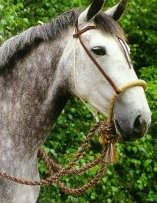
The Bosal Bridle is a part of most western training and
riding. Its made usually from plaited raw hide and is used
with a normal or one ear bridle.
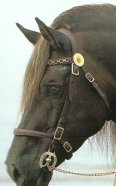
The in hand Stallion Bridle is halfway between a bridle
and a halter. It has short leather straps to which a bit is
fitted and used.
Nose Bands
nosebands are available in a huge variety of designs.
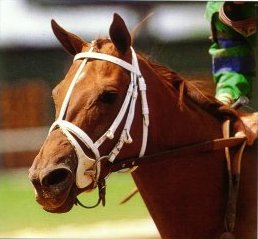
The australian cheeker is a rubber attachment which fastens
to the headstall of the bridle and on either dside of a snaffle
bit.
It helps keep the bit raised in the horses mouth preventing him
form getting his tongue over it.
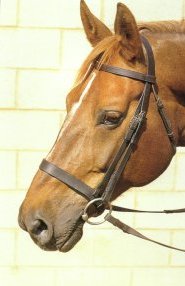
The cavesson is the simliest design available. Its the onle type
of noseband to use with a double bridle. Can also be used with
a standing martingale. It should have little or no action on the
horses head when fitted correctly.
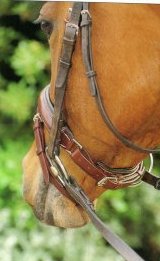
The Traditional cavesson
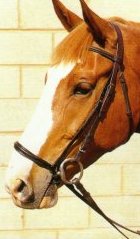
The dropped noseband is fitted with a back strap passing below
the bit. Its designed to keep the horse from opeining his mouth
and
evading the bit. Can also increase pressure on the horses poll
as well as the nose and lower jaw. This shouldnt be used with a
standing martingale.
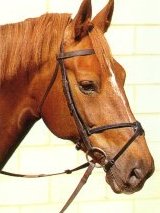
The figure eight noseband should be fitted snuggly so
that the top starp goes around the horses jaws above the
bit. This puts pressure on the horses nose and helps keep
the horse from crossing his jaws.
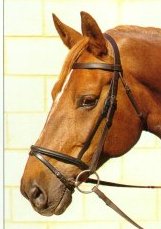
The flash noseband is based on the cavesson but has an
additional strap which is fitted below the bit. It was made
originoly for riders who wanted a noseband which closed
the mouth and which could be used alongside a standing
martingale. It is fitted slightly higher and tighter then
the
regular cavesson.
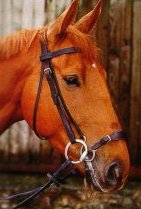
The Kineton Noseband is a severe noseband.
metal rings pass under the bit so that when a contact is taken
up strong pressure is brought to bear on both the nose and the
bit encouraging the horse to lower his head.
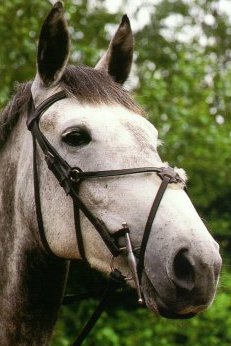
The mexican Grackle is fitted higher then the normal
one above the cheek bones. It sits higher on the face and
is thought to be more affective at preventing the horse
from crossing his jaws.
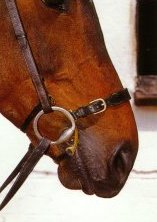
The Controller Noseband cobines the action of a
dropped and grackle noseband. Two staraps help to
keep the jorses mouth closed. The front strap is adjust-
able and fitted like a dropped noseband. For Very strong
horses the front strap can be reinforced with a strip of
metal.
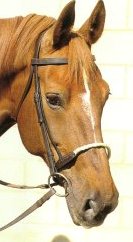
The rope cavesson is much more sever then the
leather ones in action and are seen on polo ponies
or very strong show jumpers.
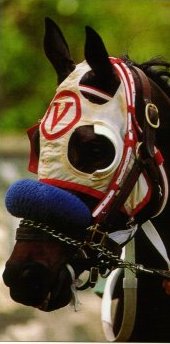
The sheepskin noseband often used on racehorses
is basically a cavesson covered with a sheepskin sleeve
It encourages a horse to lower his head, which he must
do to see over the noseband.
Curb Chains
The curb chain brings pressure on the horses curb groove. It
should
be fitted so that its brought into action when the shank of the
curb bit
is at 45 degrees. here are some examples of curb straps nd chains.
![]()
Double Link Chain
![]()
Elasticated Curb Chain

Leather Curb Chain

Single Link Chain

Western Curb Strap

Rubber covered Chain
How To Bridle
a Horse
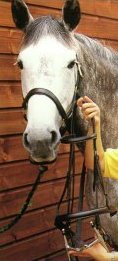 Stand on the near
side of the horse, holding the
Stand on the near
side of the horse, holding the
crownpeice in your right hand. Place the other
hand holding the bit under the muzzle.
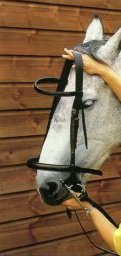 Press your thumb
against the bars of the horses mouth
Press your thumb
against the bars of the horses mouth
to encourge him to open his mouth.
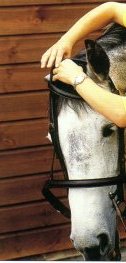 Guide the bit into
the horses mouth. Draw the bridle
Guide the bit into
the horses mouth. Draw the bridle
up with the right hand using the left hand to guide the
crownpeice over his ears.
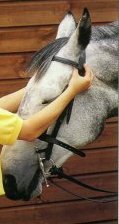 Seperate the mane
form the head peice and bring the
Seperate the mane
form the head peice and bring the
forelock over the browband
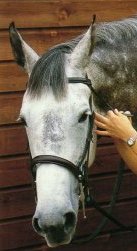 Fasten the
throatlatch It should be loose enough to
Fasten the
throatlatch It should be loose enough to
fit 4 fingers between the throatlatch and the cheeks.
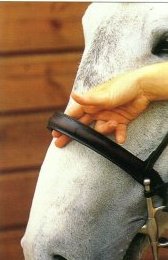 Fasten the noseband.
It should be loose enough
Fasten the noseband.
It should be loose enough
to allow you to place 2 fingers underneath it.